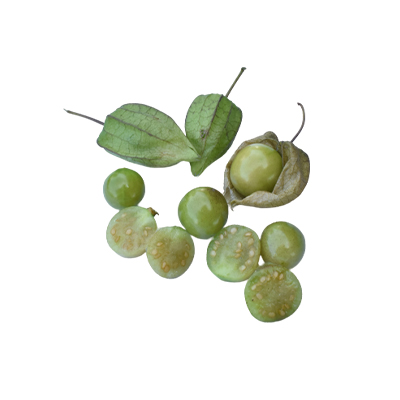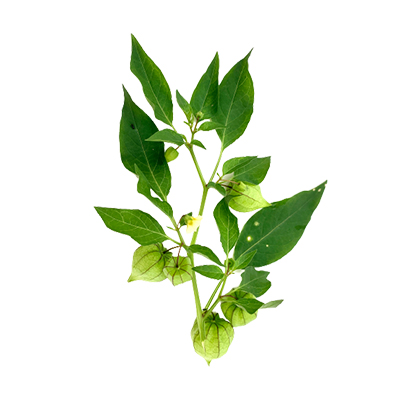Morel Berry
Physalis angulata L.
Solanaceae
Location in our garden
Beneficial Weed
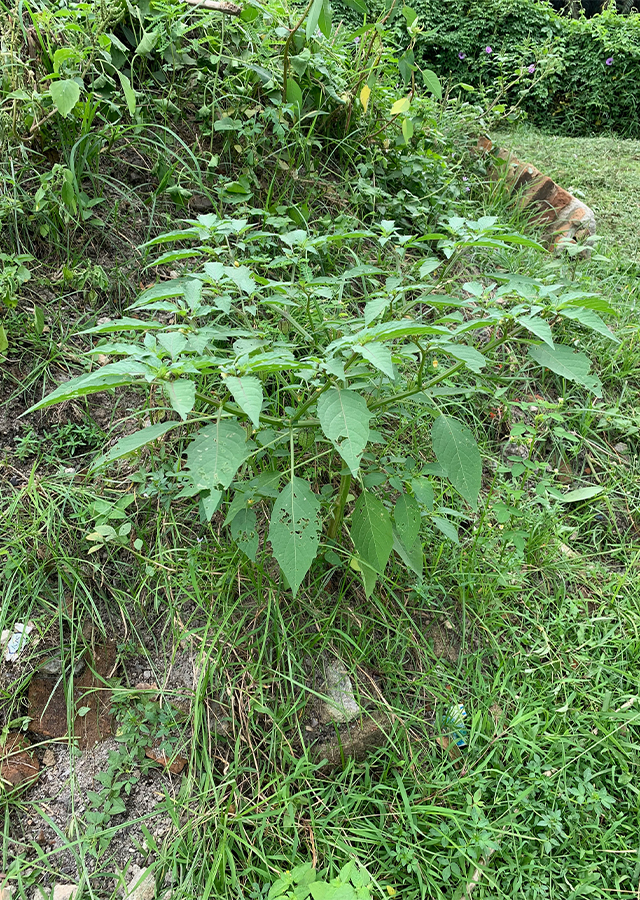
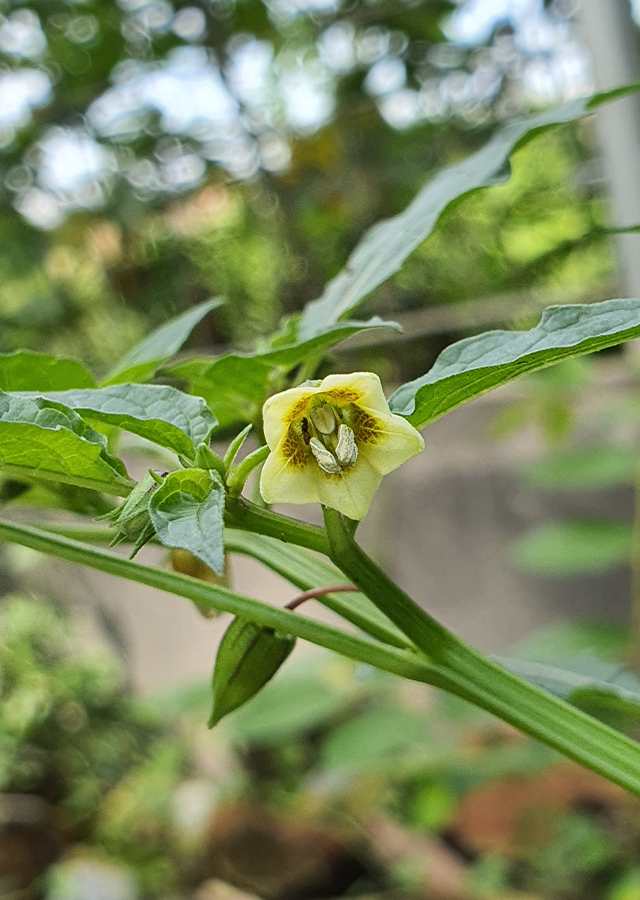
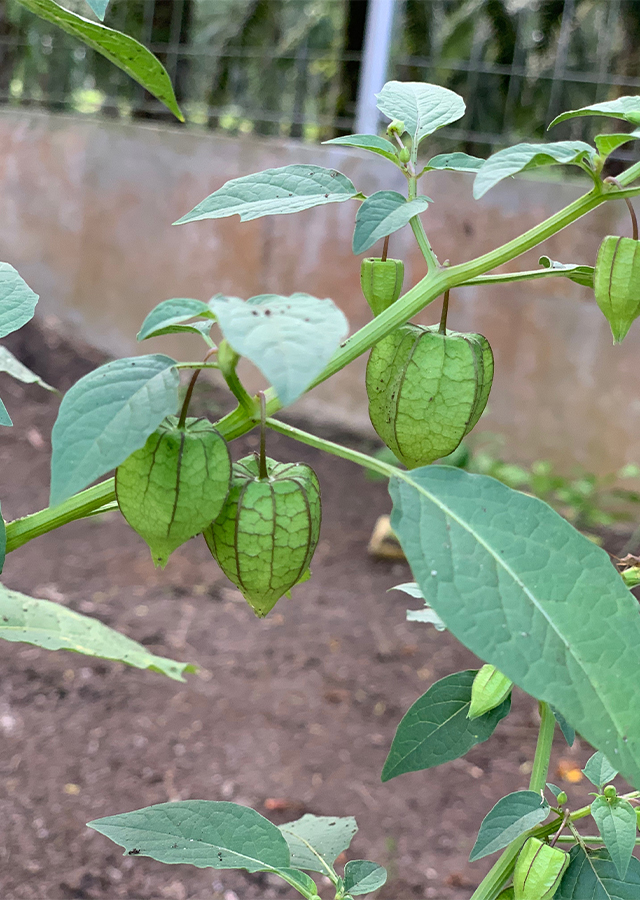
Synonym
Boberella angulata (L.) E.H.L.Krause
Physalis abyssinica Nees
Physalis angulata var. dubia Kuntze
Habitus
Herbaceous. A herbaceous, branched, annual plant growing from 10-100 cm tall
Part Used
Leaves
Seeds
Fruit
Roots
Stem
Growing Requirements
Full Sunshine
Need Shade
Habitat
Forest
Coastal
Shrublands
Grassland
Overview
Morel berry is possibly a native of Tropical & Subtropical America. It is now distributed pantropically as a weed throughout the tropical, subtropical and warm temperate regions. The plant is harvested from the wild for its edible fruit, and also supplies medicines for local use.
Vernacular Names
Balãozinho (Brazil), Da Tou Pao (Chinese), Klap (Ducth), Batoto (French), Kupanti (India), Tomatillo (Mexico), Capuli Cimarron (Spanish), Baa Tom Tok (Thailand), Ciplukan (Indonesia), Ceplukan (Java), Cecendet (Sundanese), Yor-yoran (Madura), Lapinonat (Seram), Angket, Kepok-kepokan, Keceplokan (Balinese), Dedes (Lombok), Leletokan (Minahasa).
Agroecology
It is found growing in the sub-Himalayas up to 1,650 m altitude. It thrives in fertile, moist and well-drained soil rich in organic matter, in full sun or light shade. This plant is tolerant of light frosts, but does not grow well at high temperatures.
Morphology
- Roots - tap-roots.
- Stems - hollow, ribbed, green often tinged purple. The lower stems are sometimes prostrate and root at the nodes.
- Leaves - leaves alternate to subopposite, on 1–7 cm long petioles; lamina ovate, ovate-oblong to elliptic, 3–6 cm long by 2–4 cm wide, apex acute to acuminate, base cuneate to broadly cuneate, margin entire.
- Flowers - 1 cm across, solitary, axillary on 5–12 mm pedicels. Sepals 4–5 mm, ciliate lobes 1–2 mm long. Corolla campanulate with five erect or spreading lobes, pale yellow to greenish- yellow, dark-spotted in the throat.
- Fruits - 1.2–1.5 cm across, subglobose to ovoid, green turning to yellow, sessile on invaginated base of balloon-like calyx, up to 30 mm in diameter.
- Seeds - flat reniform, yellowish.
Cultivation
- Seed - sow in situ. Germination is usually quick and free. Diurnal temperature fluctuations assist germination with daytime temperatures of 30 °C falling to 21 °C at night.
- Plants raised from seed may start flowering after 6 weeks, and fruits are ripe 6 weeks later.
Chemical Constituents
Saponins, flavonoids, polyphenol, fisalin, alkaloids, palmitat acid and stearat acid, terpenoids, tannins, steroids, kriptoxantin, elaidat acid.
Traditional Medicinal Uses
- The plant is diuretic, expectorant, febrifuge. It is used in the Pacific Islands to facilitate childbirth, to treat infertility in women and dengue fever.
- The leaves have been used to treat stomach disorders and Bright's Disease. It is analgesic, parasiticide and relaxant. It is used to treat malaria, toothache, liver ailments including hepatitis, rheumatism, and is considered a diuretic.
- Plant infusions are taken to treat gonorrhoea, indigestion, nephritis and fever are also applied to Guinea worm sores, killing the worms and easing extraction.
- A lotion prepared from the leaves is applied to treat ophthalmia in children.
- The seeds are cooked with Phyllanthus amarus seeds in a preparation given to women after childbirth.
- Sleeping sickness is treated with a mixture of the leaves combined with those of Anchomanes difformis.
- Leaves are eaten, or applied as an enema, in order to cure stomach-ache, colic, lithiasis and anuria. Added to palm wine, they are used to cure fever and to calm attacks of asthma, vomiting and diarrhoea
Part Used
Reference Sources
- CABI. (2013). Invasive Species Compendium. Physalis angulata (cutleaf groundcherry). https://www.cabi.org/isc/datasheet/40711 27-01-2021.
- Fern, Ken. (2014). Useful Tropical Plants Database. Physalis angulatata. http://tropical.theferns.info/viewtropical.php?id=Physalis+angulata. 27-01-2021.
- Lim, T.K. (2016). Edible Medicinal and Non-Medicinal Plants. New York. Springer, v.6 p.283.
- https://powo.science.kew.org/taxon/urn:lsid:ipni.org:names:195334-2



